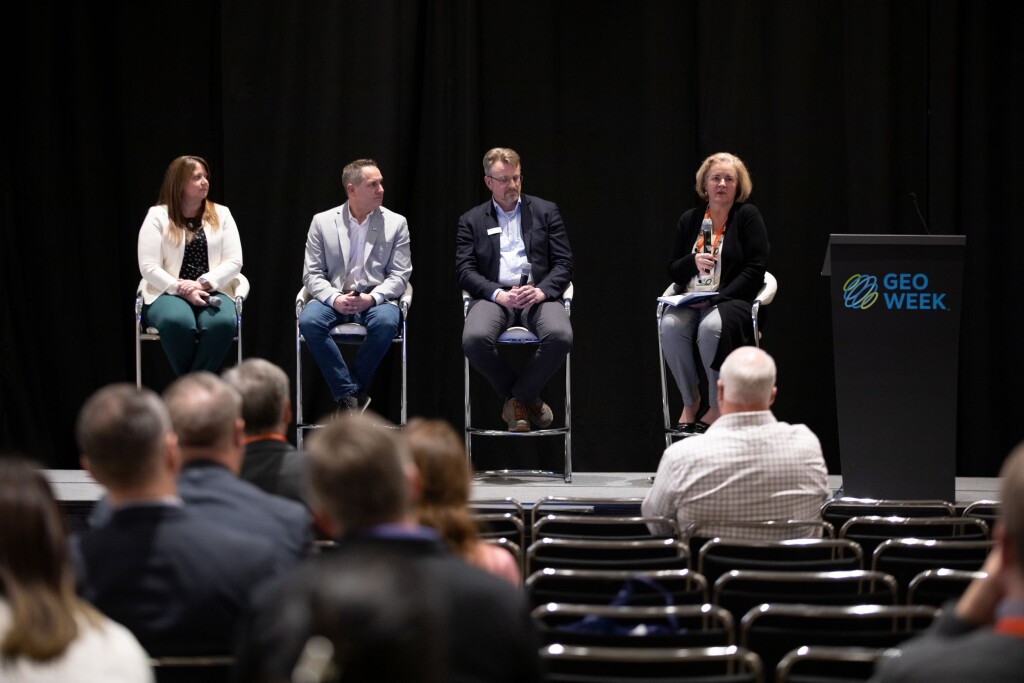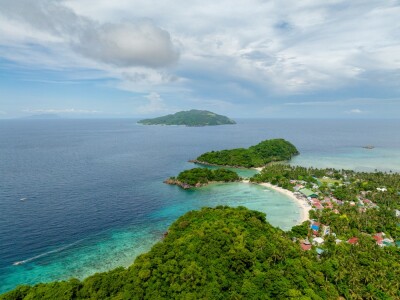Government officials, business leaders, researchers, and many others need comprehensive, accurate data to make informed decisions about life on our waterways and along our coasts. But capturing this data can be frustratingly complicated, and integrating information derived from different methods and sources can be challenging.
At GeoWeek 2024, the session “From the Beach to the Blue” explored the many issues around achieving the seamless integration of topographic and bathymetric data. Hosted by Ashley Chappell, Integrated Ocean and Coastal Mapping Coordinator at the National Oceanic and Atmospheric Administration (NOAA), the session presented case studies that illustrated how this integration can be achieved and explored the many reasons why this work is essential to achieve a variety of business, environmental, and societal needs.
In her opening remarks, Chappell reported that NOAA and other federal agencies, such as the U.S. Geological Survey (USGS), have been working “on a vision of seamless integration of land and sea data for years.” The recent 3D Nations Study, she said, discovered $13.5 billion in annual benefits from elevation data. Survey participants, she said, identified the need for both terrestrial elevation data and a combination of data for important tasks. To this end, NOAA, the USGS and others are working on integrating coastal and ocean data, including bathymetry and topography, into seamless datasets with varying resolutions.
To illustrate the challenges of obtaining and integrating this data, the session featured case studies from industry leaders. Emily Klipp, a Senior Project Manager at Dewberry, described a project her company took part in to map waterways statewide in Florida. Aimed at collected data around rivers, watersheds, springs, lakes, and other bodies of water, the project required professionals to use different methods from topobathy to terrestrial lidar to multi-beam sonar to collect accurate information from many different environments. Klipp explained the data collection process and described how her firm worked to combine the collected information to create “seamless products.”
Similarly, Dave Bernstein, Manager of Hydrographic Program and Chief Hydrographer at NV5 Geospatial, detailed his company’s work on three government projects. Discussing different data collection efforts in Texas, Florida, and North Carolina, Bernstein discussed the challenges of surveying shallow waters, including turbidity and safety concerns, highlighted the importance of reconnaissance, multi-beam, and single-beam approaches, and emphasized the need to balance time, coverage, and quality of data collection.
Bernstein said that projects involving different goals and multiple data collection methods often force professionals to face a variety of challenges, including environmental obstacles and varying degrees of stakeholder engagement. Successful project management, however, requires adapting workflows to new technologies and evaluating projects for best practices, he said.
Presenter Anders Ekelund, Vice President, Bathymetric Lidar at Hexagon, looked at the ways seamless integration of land and sea data can help mitigate global environmental challenges. Increasing temperatures, rising sea levels, biodiversity loss, explosive population growth, and other concerns present pressing concerns to all of humankind, he said, but “remote sensing and hydro data will be part of the solution.”
To make his point, Ekelund described Hexagon’s work a Japanese program to create new wetlands and on an effort in the Bahamas to chart the loss of seagrass and its relationship to carbon levels. Both efforts, which involved extensive land and sea data collection and integration, he said, show how sophisticated data capture coupled with the seamless data integration can be used to help leaders make better decisions regarding local and global environmental challenges.
Moreover, Ekelund said, the creation of seamless, integration of terrestrial and ocean mapping data could present “the business opportunity of the century” as more companies and governments will rely on this crucial information for future projects and plans.






